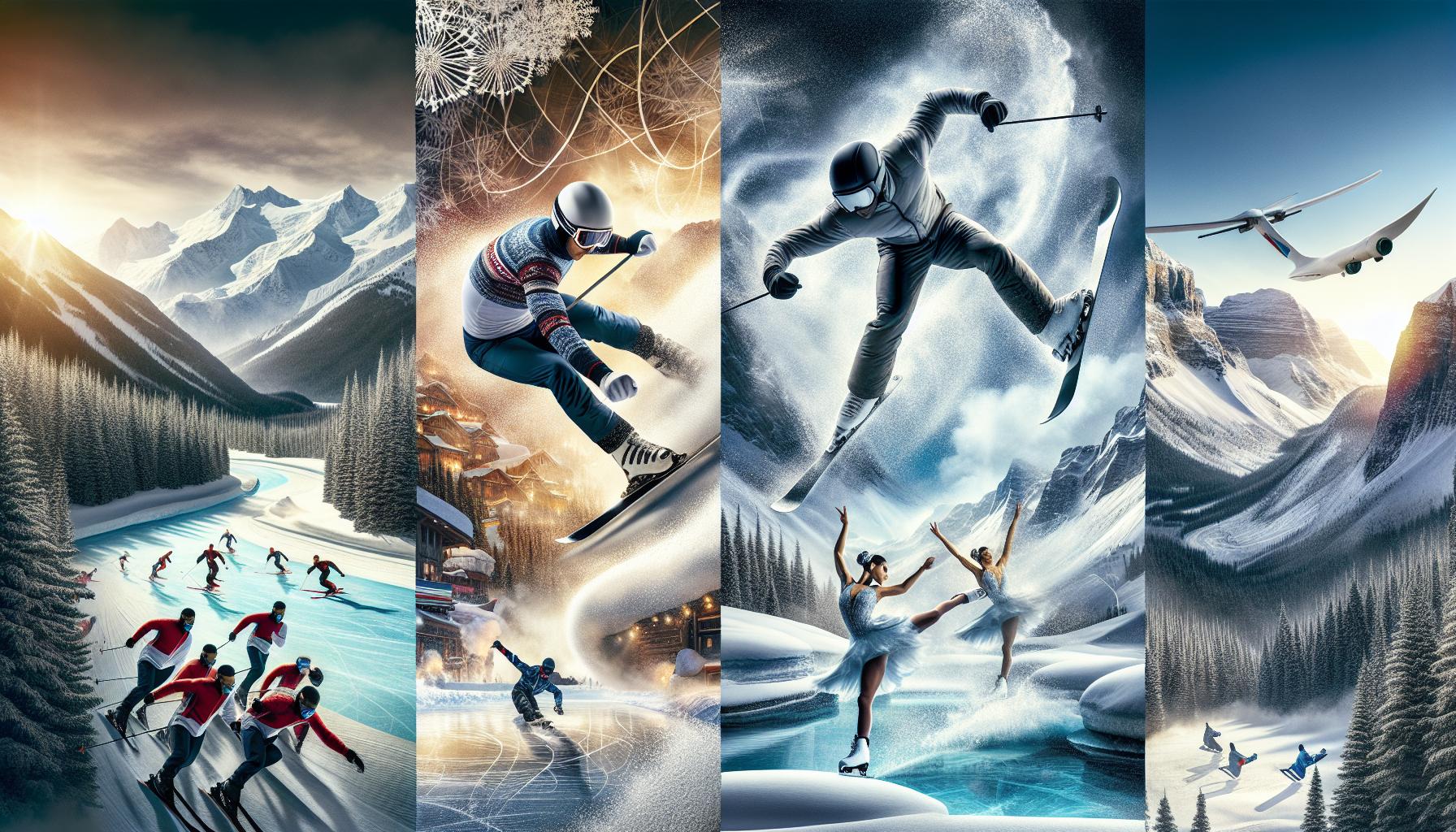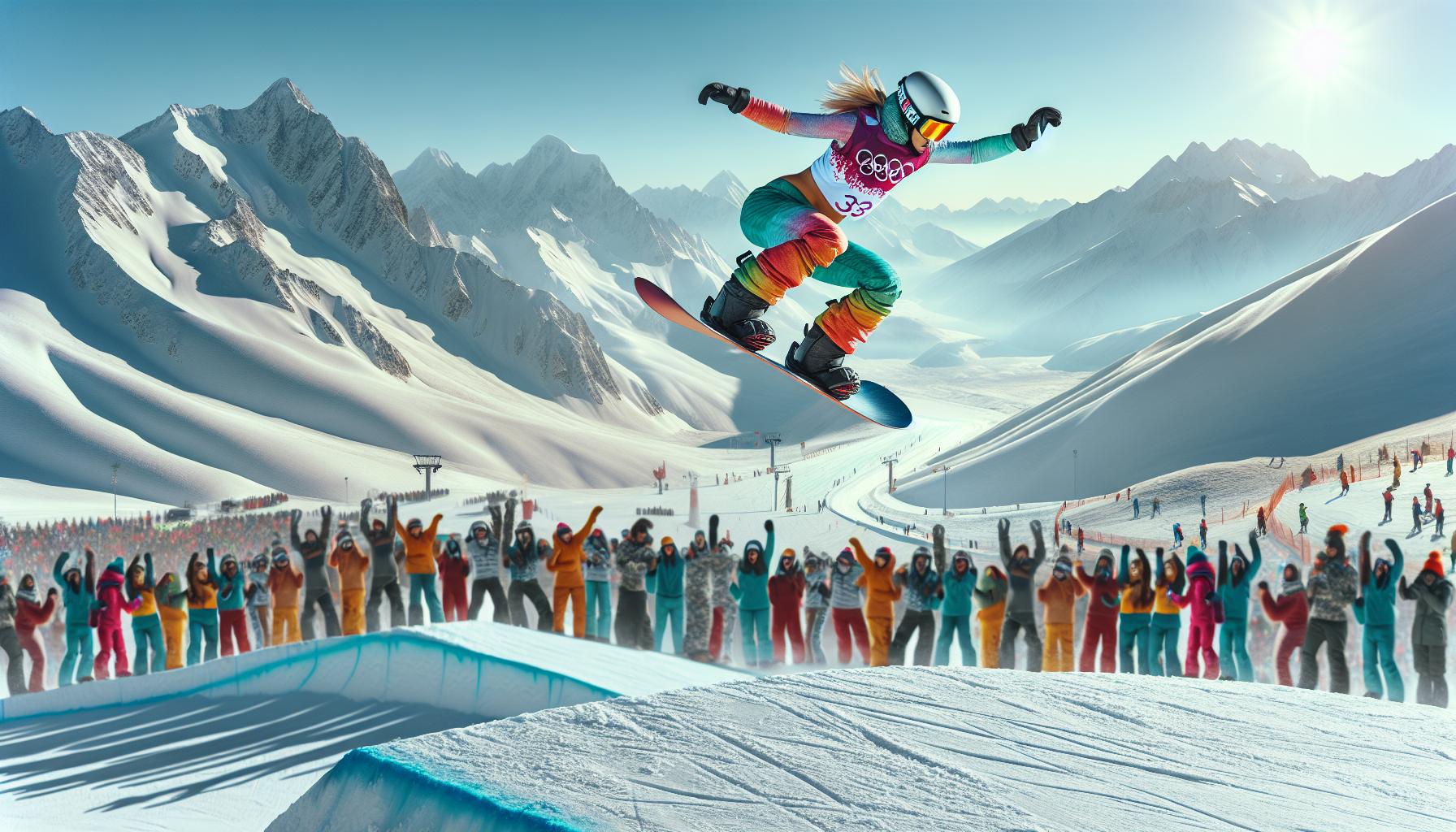The Winter Olympics captivate audiences with thrilling displays of athleticism and skill. Each edition brings together the world’s best athletes, competing in a diverse range of sports that showcase their incredible talents. But just how many sports are featured in this prestigious event?
As athletes glide, slide, and soar through various competitions, the number of sports can vary from one Winter Games to another. Understanding the breadth of these events not only highlights the dedication of the athletes but also celebrates the rich history and evolution of winter sports. Dive in to discover the current lineup of sports and what makes each one unique in the Winter Olympics.
Key Takeaways
- The Winter Olympics currently features a total of 15 sports, showcasing a wide range of athletic skills and competitions.
- Sports are categorized into three main groups: Snow Sports, Ice Sports, and Combined Sports, illustrating the diversity of disciplines.
- Compared to the Summer Olympics, the Winter Games have fewer sports, emphasizing cold-weather athletic events versus warm-weather competitions.
- Popular team sports include Ice Hockey and Curling, while individual sports like Alpine Skiing and Figure Skating highlight personal athleticism and artistry.
- The lineup of sports has evolved over the years, with new disciplines like Snowboarding and Freestyle Skiing being added to maintain audience interest.
- Some sports have been discontinued from the Winter Olympics, reflecting changes in participation and viewer preferences over time.
How Many Sports Are in The Winter Olympics
The Winter Olympics features a variety of sports showcasing athletic prowess and skill. Each edition includes a core set of sports, which may vary due to the introduction of new disciplines or the removal of existing ones. Currently, the Winter Olympics comprises 15 sports, encompassing over 100 events.
- Alpine Skiing: Athletes navigate down snow-covered hills on skis, competing in speed and precision.
- Biathlon: This combines cross-country skiing and rifle shooting, testing endurance and accuracy.
- Bobsleigh: Teams of two or four make timed runs on a specially designed sled down icy tracks.
- Cross-Country Skiing: Athletes race over various distances across challenging terrains, emphasizing endurance.
- Curling: Teams slide stones on ice toward a target area, strategizing for points and precision.
- Figure Skating: Individual and team athletes perform artistic routines on ice skates, judged for technical and artistic merit.
- Freestyle Skiing: This includes various disciplines like mogul skiing, aerials, and halfpipe, focusing on tricks and jumps.
- Ice Hockey: Teams compete on ice using sticks to score goals, combining speed and strategy.
- Luge: Athletes race down narrow, twisting tracks on small, sled-like apparatuses, competing for the fastest time.
- Nordic Combined: This sport combines cross-country skiing and ski jumping, testing versatility and strength.
- Short Track Speed Skating: Competitors race on an oval track, emphasizing speed and tactical maneuvering.
- Skeleton: Athletes make head-first, timed runs on sleds, requiring courage and precision.
- Ski Jumping: Athletes launch off ramps, judging performance on distance and style upon landing.
- Snowboarding: Including disciplines like halfpipe and slopestyle, participants perform tricks on a snowboard.
- Speed Skating: Based on long-distance racing on an oval track, athletes compete for speed and technique.
The Winter Olympics celebrates the diversity of winter sports, drawing global participation and enthusiastic audiences, reflecting the dedication of athletes and the rich athletic heritage.
Total Number Of Sports

The Winter Olympics features a total of 15 different sports. Each sport offers a unique spectacle and encompasses a variety of events that showcase the skills of elite athletes from around the world.
Breakdown By Category
The 15 sports in the Winter Olympics can be categorized into three main groups:
- Snow Sports
- Alpine Skiing
- Cross-Country Skiing
- Freestyle Skiing
- Ski Jumping
- Snowboarding
- Ice Sports
- Figure Skating
- Ice Hockey
- Luge
- Short Track Speed Skating
- Skeleton
- Speed Skating
- Combined Sports
- Biathlon
- Nordic Combined
- Bobsleigh
- Curling
This categorization illustrates the diverse skills required across different disciplines.
Comparison With Summer Olympics
The Winter Olympics hosts 15 sports, whereas the Summer Olympics features over 30 sports. The distinction lies in the seasonal focus: Winter Games emphasize cold-weather competitions, while Summer Games spotlight warm-weather sports. This results in a different range of athletic skills and types of events being showcased.
Popular Sports In The Winter Olympics

The Winter Olympics features a wide array of exciting sports, showcasing both team dynamics and individual prowess. Notably, the Games highlight the skills and determination of athletes across various disciplines.
Team Sports
Team sports in the Winter Olympics emphasize collaboration and strategy. Ice Hockey stands out as one of the most popular team events, captivating audiences with fast-paced action and teamwork. Curling showcases precision and strategy, as teams take turns sliding stones on a sheet of ice, aiming for the target area. The Bobsleigh, while centered on speed, also involves teams working together to navigate the twists of the track, demonstrating both athleticism and teamwork.
Individual Sports
Individual sports in the Winter Olympics highlight personal skill and determination. Alpine Skiing requires athletes to navigate a series of gates on a downhill course, challenging their speed and agility. Figure Skating blends athleticism and artistry, with competitors performing intricate routines that capture the audience’s attention. Snowboarding includes events such as the halfpipe and slopestyle, testing an athlete’s creativity and technical skills. Speed Skating emphasizes endurance, with athletes racing in various distances around an oval track, showcasing remarkable speed and stamina. Each individual sport contributes to the overall excitement of the Winter Games, allowing athletes to shine in their respective disciplines.
Changes Over The Years

The Winter Olympics reflect the evolving nature of winter sports, with various changes over the years. New sports have been introduced while others have been discontinued, highlighting the dynamic landscape of the Games.
New Sports Added
The Winter Olympics introduced several new sports since its inception. Notable additions include:
- Snowboarding: Added in 1998, it features events like the Halfpipe and Slopestyle.
- Freestyle Skiing: Included in 1992, it showcases disciplines such as mogul skiing and aerials.
- Team Ski Jumping: Debuted in 2010, it emphasizes collaboration among ski jumpers.
- Mixed Doubles Curling: Launched in 2018, it combines skill and strategy in a new format.
These additions reflect trends in sport popularity, catering to younger audiences and evolving athletic skills.
Sports Discontinued
Certain sports have been removed from the Winter Olympics, often due to various factors such as declining participation or changing viewer interests. Discontinued sports include:
- Tobogganing: This sport was featured in early Games but faded due to safety concerns.
- Curling (early version): Initially included in 1924, it was considered a demonstration sport before reappearing in 1998.
- Military Patrol: Represented in 1924, it fell out of favor as the Olympics focused on more mainstream sports.
The discontinuation of these sports indicates the ongoing assessment of event relevance and audience appeal.
Imagination of Sports Enthusiasts Worldwide
The Winter Olympics continue to capture the imagination of sports enthusiasts worldwide. With 15 distinct sports showcasing a blend of individual talent and team collaboration, the Games highlight the incredible dedication of athletes. Each sport brings its own unique challenges and excitement, ensuring a thrilling experience for viewers.
As winter sports evolve and adapt to changing trends, the Winter Olympics remains a dynamic event that reflects the spirit of competition. The ongoing introduction of new disciplines keeps the Games fresh and engaging, inviting fans to celebrate the remarkable achievements of athletes from diverse backgrounds. The Winter Olympics truly embodies the essence of winter sports and the passion that drives athletes to excel on the global stage.